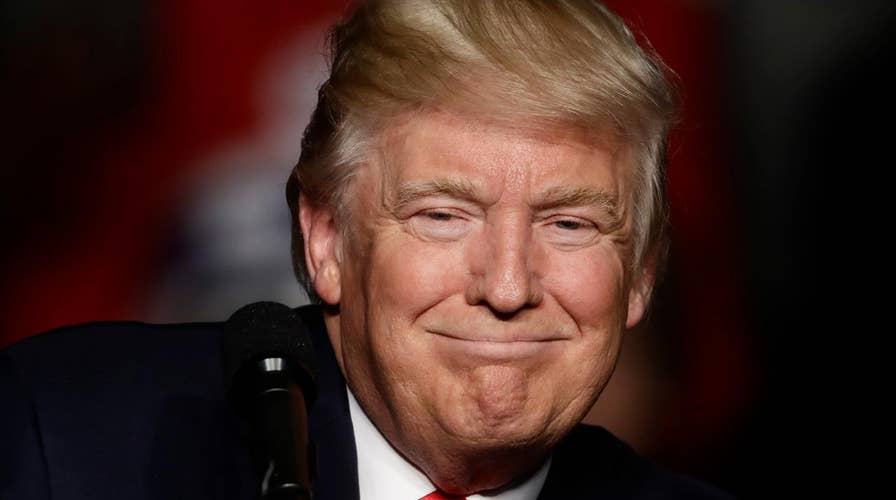Donald Trump’s proclamation that he would build a “wall” along the U.S.-Mexico border was a major selling point in his campaign for the presidency. It was this commitment that helped propel Trump to the forefront of a crowded field of primary opponents either unwilling or hesitant to back the idea, and it no less helped distinguish him significantly from Hillary Clinton on a major political issue important to Americans not just in border states, but nationwide.
It will soon be show-time for Trump, who will step into the Oval Office in just weeks from now with high expectations, and there is no doubt that millions of Americans are eager to see him follow through on this promise—as with many others.
There is some angst, however, that Trump and his team of advisers might be taking a step back from the idea of a so-called wall on the Southwest border and instead considering a virtual barrier, comprised of sensors and radars, to stop illegal foot and vehicle traffic from pouring into the U.S. That would be a serious mistake, for not only the reason it would signal a broken promise, but also because virtual fencing—as a replacement to physical infrastructure--has been tried before and failed.
In 2006, Congress passed and President George W. Bush signed into the law the Secure Fence Act, mandating the construction of more than 700 miles of border fencing along the Southwest border. The law was predicated on replicating the success of the San Diego border fence, which starts at the Pacific Ocean and extends inland approximately 14-miles.
The Trump administration would be foolish to revive the virtual border fence in place of reliable physical impediments and not learn from the lessons of the past.
The design in San Diego is simple yet extremely effective. Built in the mid-1990’s, the San Diego border fence consists of two layers of fencing, separated by a high-speed border patrol road and equipped with all the bells and whistles to give the Border Patrol every advantage to respond to illegal crossings. In short order, the San Diego border fence ceased drug vehicle drive-thrus and reduced the smuggling of people and narcotics by 90 percent, according to law enforcement statistics.
By 2006, the issue of border security was once again a political lightening rod. The prevailing viewpoint in Congress at the time was that San Diego’s infrastructure, once recreated in other border areas, would be equally as effective to protect communities from the threat of violence and close illegal entry points from being exploited daily.
The Bush administration had other ideas. Its support for the Secure Fence Act was mild at best, but the political opportunity was seized. Soon after its enactment, it was evident the law was more of a move in desperate response to public outcry and seen as an enticement to push through another amnesty for millions of illegal immigrants.
Once the prospect of amnesty unraveled, so did the Bush administration’s interest in fulfilling the mandates of the Secure Fence Act.
So what did the Bush administration do? It began sidestepping the law, and incorporated a combination of less than effective impediments—including vehicle barriers and single layer pedestrian fencing—in order to convey the mileage target was met.
The Bush administration also invested heavily in virtual fencing with the hope that technology would soon replace the demand for barriers of any kind. With then-Homeland Security Secretary Michael Chertoff running point, the Bush administration utilized every stall tactic available to discourage physical fence construction.
What ensued was a billion-dollar boondoggle.
The Bush administration contracted with a leading defense company to launch the Secure Boarder Initiative. The objective was to supplant double-layered fencing with a series of sensors and cameras to enhance monitoring and enforcement. Aside from poor program management and oversight, the technology that compromised this virtual wall was costly and impractical due to an overly complex network of assets that were incompatible with the Border Patrol mission.
It didn’t work. And the system was eventually scrapped by the Obama administration five years after its start.
The Trump administration would be foolish to revive the virtual border fence in place of reliable physical impediments and not learn from the lessons of the past.
It’s likely that border infrastructure is not conceivable along every inch of the Southwest border due to topographic constraints—and technology along with personnel can most certainly fill those areas. But the idea that virtual fencing might prevail over physical fencing—as some of Trump’s advisers are now suggesting—is a bad move that ignores the realities of the border and ignores lessons-learned.
Every president is bound to make mistakes, but for Trump, this cannot be one of them. Trump must avoid getting hoodwinked by interests and personnel that would like to resurrect the construction of a virtual fence instead of building what is conversationally called a wall but is more realistically an extension of the San Diego border fence.
It’s a promise that Trump must uphold.

